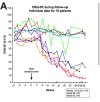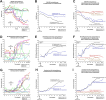Males responded more strongly to placebo treatment
A systematic review of sex differences in the placebo and the nocebo effect
A systematic review of sex differences in the placebo and the nocebo effect - PMC
The present review investigated whether there are systematic sex differences in the placebo and the nocebo effect. A literature search was conducted in multiple electronic databases. Studies were included if the study compared a group or condition ...
Last edited:


